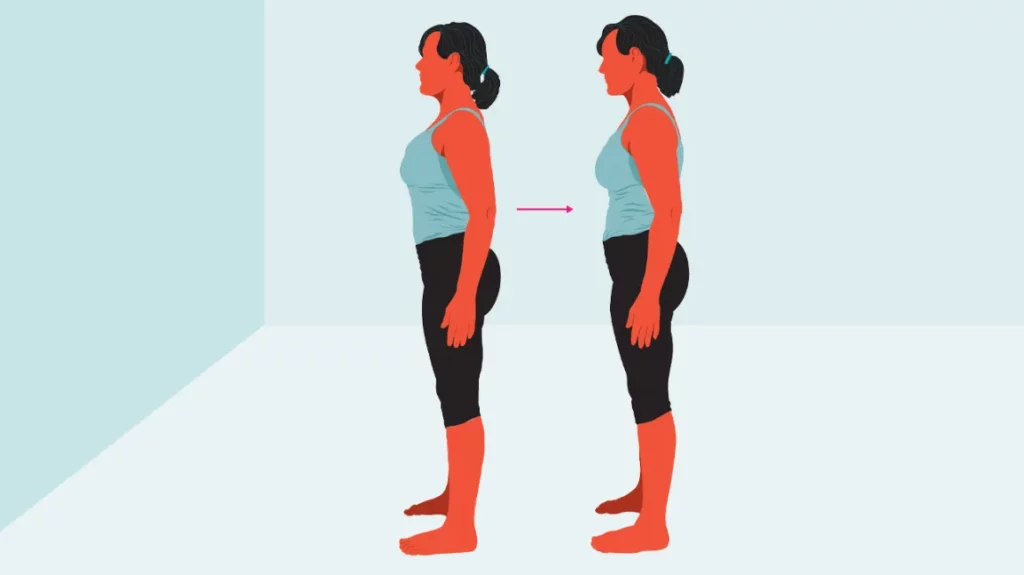Do you know what your neutral spine looks like? If not, you need to learn about it! A healthy spine is key to preventing back pain and other health problems. In this blog post, we will discuss what a neutral spine is, how to achieve it, and the benefits of having a healthy spine. We hope that this information will help you maintain a healthy spine for years to come!
Contents
What Is a Neutral Spine?
 A neutral spine is the natural position of your spine. When you have a neutral spine, your head is level with your shoulders, your back is straight, and your pelvis is level. This is the position that your spine should be in most of the time. It is believed that this is the best position for your spine because it puts the least amount of stress on your spine and other tissues.
A neutral spine is the natural position of your spine. When you have a neutral spine, your head is level with your shoulders, your back is straight, and your pelvis is level. This is the position that your spine should be in most of the time. It is believed that this is the best position for your spine because it puts the least amount of stress on your spine and other tissues.
Sometimes, your spine might not be in a neutral position. This can happen when you sit for long periods of time, stand for long periods of time, or lift something heavy. When your spine is not in a neutral position, it can put stress on your spine and other tissues, which can lead to pain.
So you need to pay attention to your spine and make sure that it is in a neutral position as much as possible. With the right intervention, you can actually prevent pain before it starts.
How Do I Know If My Spine Is Not Neutral?
It is important to have a neutral spine for optimal posture and back health. There are several ways to determine if your spine is not in a neutral position.
- First, look at yourself from the side in a mirror. You should see a relatively straight line running from your ear through your shoulder, hip, knee, and ankle. If you notice any deviations from this line, your spine is likely not in a neutral position.
- Second, you can lie down on your back on a flat surface. Place your hands on your stomach and ensure that there is a space between your lower back and the surface you are lying on. If there is no space, your spine is arched and not in a neutral position.
- Third, you can sit in a chair and place your hand on your stomach. Once again, you should be able to feel a space between your lower back and the chair. If there is no space, your spine is not in a neutral position.
These are some of the ways you can determine if your spine is not in a neutral position. It is important to fix this as it can lead to pain and other health problems. While it is possible to fix this on your own, it is recommended that you see a doctor or physiotherapist if you are having trouble.
What Causes a Neutral Spine to Become Imbalanced?
 There are several things that can cause your neutral spine to become imbalanced. Some of the causes are listed below:
There are several things that can cause your neutral spine to become imbalanced. Some of the causes are listed below:
- Poor posture. When you sit or stand with poor posture, it puts extra stress on your spine and can lead to an imbalance.
- Wearing high heels. Wearing high heels can also cause an imbalance in your spine.
- Carrying too much weight. If you are carrying extra weight, it can also cause an imbalance in your spine.
- Age. As you age, your spine can start to lose its natural alignment.
- Injury. An injury to your spine can also cause it to become imbalanced.
If you have a neutral spine, it is important to keep it in balance. These causes are very common and can lead to an imbalance in your spine. In addition to these, there are some risk factors that can increase your chances of developing an imbalance. Some of the risk factors include:
- Being female. Females are more likely to have an imbalance in their spine than males.
- Having a family history of spine problems. If you have a family member with a spine problem, you may be more likely to develop one yourself.
- Having a sedentary lifestyle. If you don’t move around much, it can also lead to an imbalance in your spine.
If you have any of the risk factors listed above, it is important to be aware of them and take steps to prevent an imbalance in your spine.
Why Is a Neutral Spine Important?
There are so many reasons to maintain a neutral spine (a.k.a. having good posture), but here are just a few:
- Reduced risk of injury: It is much easier to injure yourself if your spine is not in alignment. This is because your muscles, ligaments, and tendons have to work harder to keep you stable, which can lead to strains, sprains, and other issues.
- Less pain: When your spine is out of alignment, it puts pressure on your nerves. This can lead to pain in your back, neck, and other areas.
- Improved breathing: When your spine is in alignment, your lungs have more room to expand, making it easier to take deep breaths. This helps improve your overall respiratory function.
- Increased energy: Good posture helps your body to function more efficiently by minimizing the amount of energy required to support your frame. This can lead to increased energy levels and improved stamina.
- Greater confidence: When you stand tall with good posture, you naturally exude confidence. This can come in handy in both personal and professional situations.
- Enhanced mental focus and concentration: Finally, a neutral spine is related to improved mental focus. When your spine is in alignment, it allows your brain to function at its best by providing optimal blood flow and oxygenation. This can lead to improved concentration and focus.
As you can see, there are many reasons to maintain a neutral spine. You should understand the importance of having a neutral spine and how to achieve it. Because if you don’t, you may be putting yourself at risk for pain, injury, and a host of other problems. Now let’s take a look at how to do it.
How To Get A Neutral Spine?
 When you hear the term “neutral spine,” you might think it has something to do with being zen or keeping calm. But in reality, having a neutral spine is key to good posture and spinal health. So how can you achieve it? Here are a few techniques to get this, these are listed below:
When you hear the term “neutral spine,” you might think it has something to do with being zen or keeping calm. But in reality, having a neutral spine is key to good posture and spinal health. So how can you achieve it? Here are a few techniques to get this, these are listed below:
- Sit in a chair with your back straight and your feet flat on the ground.
- Place one hand on your stomach and the other on your lower back.
- Gently arch your back until you feel a stretch in your lower back.
- Hold this position for 5-10 seconds.
- Repeat this stretch several times throughout the day.
One of the best ways to maintain a neutral spine is to strengthen the muscles around it. This can be done by doing exercises that target the core muscles, such as:
- Sit-ups: This exercise strengthens the abdominal muscles, which help support the spine.
- Planks: This exercise strengthens the muscles in the arms, shoulders, and legs, as well as the abdominal muscles.
- Bridges: It strengthens the muscles in the buttocks and hamstrings, which also help support the spine.
- Crunches: It is very similar to sit-ups, but it targets the upper abdominal muscles.
- Yoga: You can also try some simple yoga poses to help strengthen the core muscles.
Maintaining a neutral spine is important for spinal health, but it’s also important for overall posture and body alignment. When the spine is in neutral, the head is in line with the shoulders and the pelvis is in a neutral position. This alignment helps to evenly distribute weight throughout the body and avoid putting too much strain on any one area.
It also helps to prevent pain in the lower back, neck, and shoulders. So if you’re looking to improve your posture or relieve pain, start by working on achieving this condition.
Conclusion
To conclude, a neutral spine is often thought of as the ideal spinal alignment. This is because it helps to take the stress off of the spine and other supporting structures. Additionally, maintaining this can help to prevent injuries and pain.
However, it is important to keep in mind that everyone’s spine is different and what may be considered “neutral” for one person may not be the same for another. It is best to consult with a healthcare professional to determine what is best for you.
Please consider Physical Therapy as it helps patients recover from pain. If you’re experiencing Back pain, Shoulder pain, Knee pain, Neck pain, Elbow pain, Hip pain Arthritis pain, or any kind of body pain, a physical therapist at MantraCare can help: Book a physiotherapy session.


